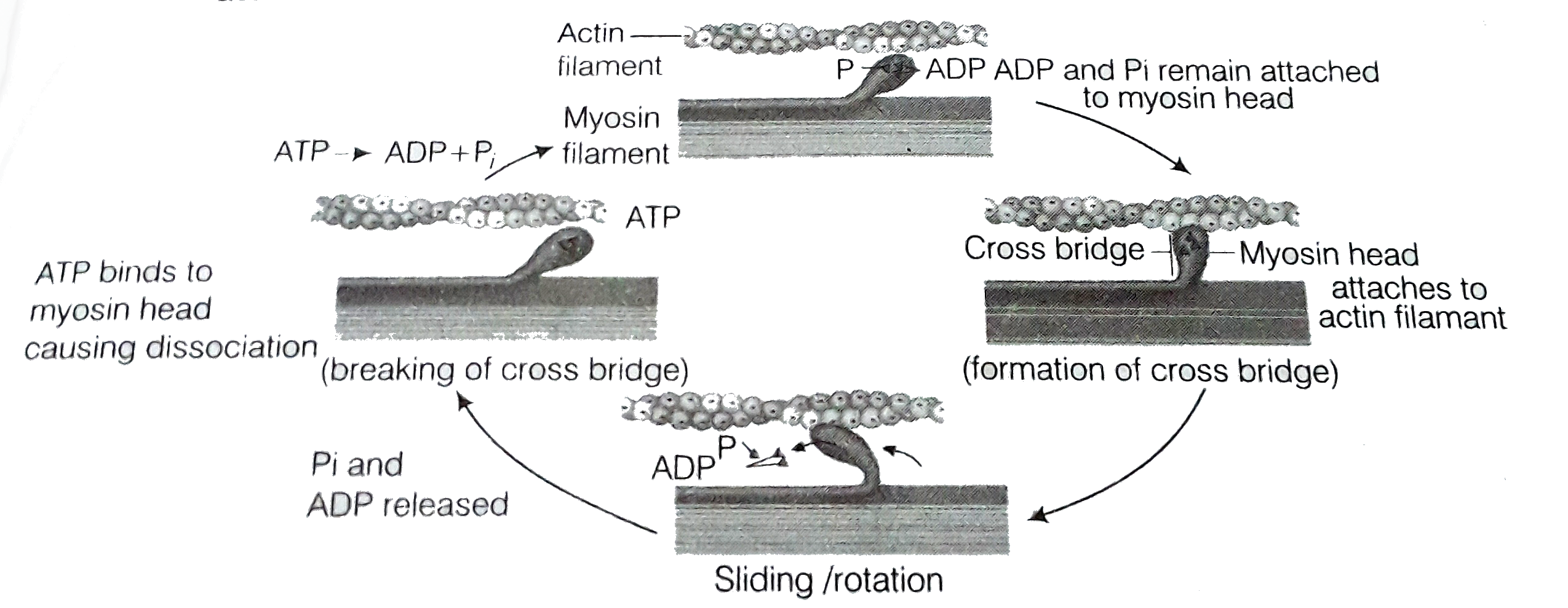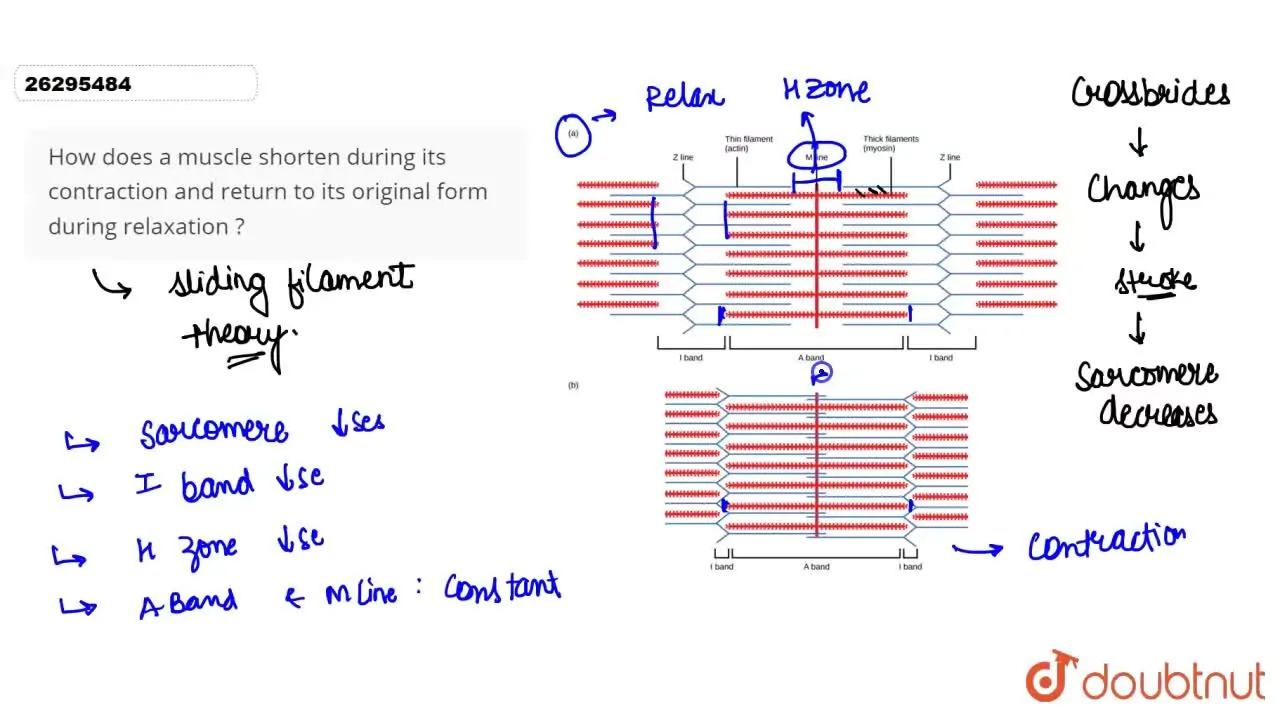How does a muscle shorten during its contraction and return to its original form during relaxation ?
Formation of cross-bridge between the actin and myosin filament help muscle to contract.
(i) An ATP molecule joins the active site on myosin head of myofilament. These heads contains an enzyme, myosin ATPase that along with Ca2+andMg2+ ions catalyses the breakdown of ATP.
ATPMyosin ATPase−−−−−−−−→Ca2+Mg2+ADP+Pi+Energy
(ii) The energy is transferred to myosin head which energises and straightens to join an active site on actin myofilament, forming a cross-bridge.

(iii) The energised cross-bridges move, causing the attached actin filaments to move towards the centre of A-band. The Z-line is also pulled inwards causing shortening of sarcomere, i.e., contraction. It is clear from the above explanation that during contraction A-bands retain the length, while I-bands get reduced.
(iv) The myosin head releases ADP and Pi, rekaxes to its low energy state. The head detaches from actin myofilaments when new ATP molecule joins it and cross-bridge are broken.
(v) In repeating cycle, the free head cleaves the new ATP. The cycles of cross-bridge formation and breakage is repeated causing further sliding.

(vi) Muscle relaxation occurs after contraction when the calcium ions are pumped back to the sarcoplasmic cisternae, thus, blocking the active sites on actin myofilaments. The Z-line returns to original position, i.e., relaxation.
Related Playlists
- BOOK - NCERT EXEMPLARCHAPTER - LOCOMOTION AND MOVEMENTEXERCISE - Short Answer Type Questions9videos
LOCOMOTION AND MOVEMENT
- BOOK - NCERT EXEMPLARCHAPTER - EXCRETORY PRODUCTS AND THEIR ELIMINATION EXERCISE - Long Answer Type Questions6videos
EXCRETORY PRODUCTS AND THEIR ELIMINATION
- BOOK - NCERT EXEMPLARCHAPTER - MINERAL NUTRITIONEXERCISE - Long Answer Type Questions8videos
MINERAL NUTRITION
Similar Questions
Answer the following briefly :
(a) How does the muscle shorten during its contraction and lengthen during its relaxation ? (b) What biological functions are served by the skeletal system ? (c ) What type of muscles will be antagonistic to pronators and abductors respectively, and why ? (d) Why a red muscle fibre can work for a prolonged period while a white muscle fibre suffers from fatigue after a shorter work? (e ) Where from the muscle gets energy for its contraction ?View SolutionDuring muscle contraction
View SolutionDuring muscle contraction
View SolutionDuring muscle contraction
View SolutionDuring muscle contraction
View SolutionDuring muscle contraction
View SolutionDuring muscle contraction
View SolutionWhat does coal produce during its combustion?
View SolutionDuring contraction of muscles :−
View SolutionDuring contraction of muscles :−
View Solution


